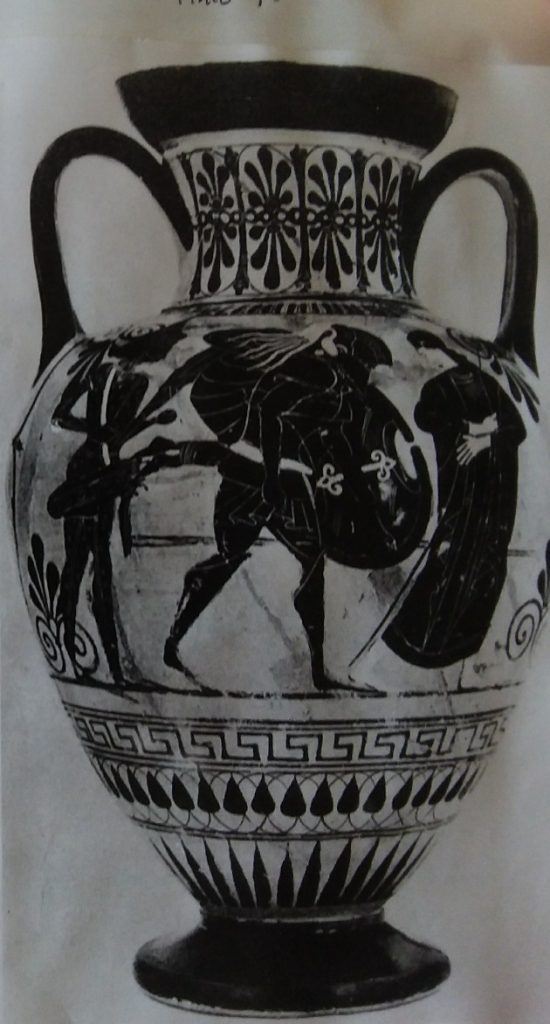
Because of lockdown, I have been unable to write about exhibitions. I particularly regret that I missed the Picasso exhibition at the RA. The idea of commenting on an exhibition experienced virtually does not attract me. Therefore, I thought I would write more about my own work. It clarifies things for me too.

Already my website explains the influences of ancient sites and monuments in my paintings. With this new series of blogs, I shall examine ways Greek myths and ancient images of those myths are reflected in my work. I mentioned in my blog about Troy https://margotaloudon.eu/troy-at-the-british-museum/ that I was very familiar with the iconography of ancient Greek pots. Studying in depth the escape of the Trojan Aeneas from the city’s destruction, I became sure that for some painters artistic composition were more important than adhesion to any particular received narrative https://www.jstor.org/stable/504392?seq=1 When I take inspiration from Greek pots, I pay tribute to their artistry.
I knew the myths behind the images from a very young age. Wanting to understand better the culture and language of the civilization that produced these motivated me later to study Greek history and literature, and art at University.
Now, after years of engagement in a totally different sphere of activity, my art is taking me in a full circle back to the Greek myths which inspired me all those years ago.
I shall start by looking at the Orpheus myth which inspired a series of paintings exhibited in an exhibition in 2015. I shall explain how even my abstract paintings often reference Greek myth. Also I shall cover a series of myths that have influenced my printmaking, including a tongue in cheek look at the Greek underworld, Hades and its punishments, the jollity and darker side surrounding the god Dionysus and his followers. Most recently, I have worked on a COVID-19 series referencing mythical heroes and monsters.
